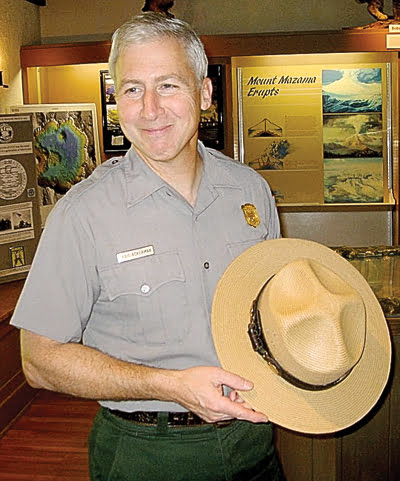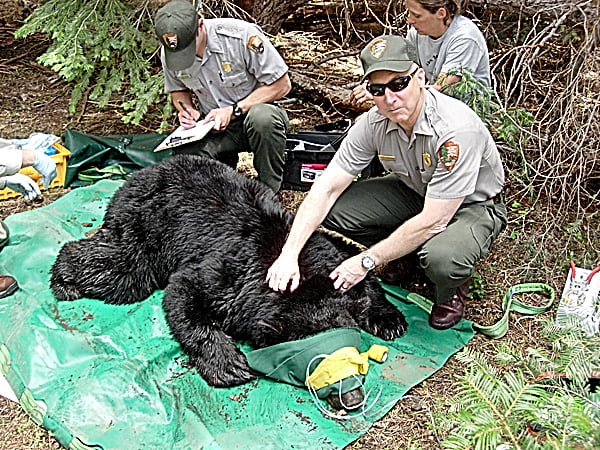
Ken Springer
Watoga Park Foundation
The nearly complete
History of Jesse’s Cove Trail
Part One
There is a section on maps of Watoga State Park that is labeled “Wilderness Area.” And though much of that area may not meet the strict definition of “wilderness,” there are places within its boundaries where few have trod in more than a century.
A stream called Rock Run is in the northeastern margin of this densely forested area, dominated by ridges and deep hollows. Forty years ago this summer, a trail was constructed along Rock Run starting just downstream from the Riverside Campground and climbing alongside a continuous series of waterfalls and pools bordered by rhododendron clad hillsides.
After a gain of nearly a thousand-foot elevation, the trail arrives at the Ann Bailey Trail after passing by the historic Workman Cabin. The thoughtful design of Jesse’s Cove Trail is that a scenic loop is made by taking Ann Bailey out to the iconic Ann Bailey Tower. After a stop there to enjoy the outstanding view, the hiker can return to the Riverside Campground on Arrowhead Trail, starting at the very foot of the tower.
I first set foot on this remarkable trail in the early summer of 2008. It was the final day after a long weekend of camping and mountain biking with friends from Beckley. An early riser, I decided not to wake the others and headed out for a trail run.
After consulting the Watoga trail map, I found the trailhead at the south end of the Riverside Campground and followed the footpath along the Greenbrier River for a quarter-mile. The trail leaves the river and ascends a fairly steep trail leading into the mouth of Rock Run.
I was not prepared for the experience that lay ahead; it was nothing short of spectacular. The stream plunges down through the steep-walled canyon beckoning you further as the civilized world closes off behind you. Columbines hung from giant boulders on the hillsides; trillium and Dutchman’s Breeches lined the trail’s margins.
After wending through dense rhododendron and birch and making numerous stream crossings, the trail eventually leaves the stream and heads straight up the ever-widening valley eventually arriving at the Workman Cabin. I paused here to explore the log structure, not knowing that someday in the future, I would more intimately know this little cabin.
Jesse’s Cove Trail was rugged and challenging for running, but once on the Ann Bailey Trail, it was smooth sailing to the Ann Bailey Tower and then down the Arrowhead Trail.
Arriving back at the campground, I encountered a small group of my friends who were nursing mugs of steaming coffee as they sat in a circle around a campfire.
And here is where a failure to adequately communicate had unexpected consequences for several of my other friends, still asleep in their tents. As I passed by my early bird friends they asked me how my morning went. I replied that I had just been on the most beautiful trail that I had seen since arriving at Watoga – a route called Jesse’s Cove Trail.
What I didn’t mention, and assumed they knew, was that I had run the trail. I broke camp and left before the rest of the crew got up. When they later inquired about my whereabouts, they were told that I had already finished a trail and had left for home. The early birds also repeated what I had said about it being a great trail and told them it was called Jesse’s Cove.
They thought that I had mountain-biked the trail and did not realize that I was running, not cycling.
It turns out that their original intention was to shuttle their mountain bikes up to the Ann Bailey Trailhead and ride the trail out to the tower and take Arrowhead Trail back to the campground. But on my recommendation, or so they thought, they instead decided to turn off the Ann Bailey Trail and ride the Jesse’s Cove Trail back to Riverside Campground – a colossal mistake.
I received a call later that day from one of my camping friends. He told me that those who descended the Jesse’s Cove Trail on mountain bikes were seriously discussing tarring and feath- ering me and putting me on the first Greyhound bus back to Ohio. He also said that they had to carry their bikes for most of the length of the trail because of the misunderstanding.
I cringed when I heard this, as I was not too fond of going back to Ohio. I mean, when you’ve seen one soybean field, you’ve seen them all.
I pleaded my innocence on this matter and conveniently blamed it on the folks who erroneously told them that I biked the trail rather than ran it. Soon, all was forgiven and forgotten – I think.
Anyway, Jesse’s Cove Trail is not now, nor has it ever been, intended for mountain biking. It is a well-conceived hiking trail that in recent years has been the victim of annual damage from flooding, which has erased most of the stream crossings.
Adding to the list of insults to the trail are downed trees, trail erosion, and a sea of nettles. For the most part, the damage is in the lower half of the trail. But with a sufficient workforce, the necessary changes can be made to the trail so that it can continue to be a pleasurable hike for many more decades.
Let’s now examine how this trail came into existence back in 1980.

The idea of creating a hiking trail along Rock Run was solely Craig Ackerman’s, the park superintendent at the time.
Craig, now the superintendent of Crater Lake National Park in Oregon, said he was always impressed with the lower reaches of Rock Run.
“It was clearly a game trail before a hiking one for humans,” he began. “In spring the stream intermittently ran full and cold, and the isolated ravines provided a silence that allowed one to hear every little cascade as it tumbled over ledges and flat rocks.
“It was intended to be a loop trail for people staying in the Riverside Campground and nearby cabins. And it would provide an alternative to reaching the Ann Bailey lookout tower by the steep Arrowhead Trail.
“In practice, it opened up more “wilderness” type experience of great riparian habitat and solitude. A secondary objective for the trail was to introduce people to the pioneer history of Watoga, often untold, by enabling hikers to experience up-close, the Workman Cabin and cemetery.”
Craig made a point of saying this in regard to the Workman Cabin: “We had great plans for rehabbing the cabin, but sadly other exigencies prevailed and it didn’t actually happen before my departure.”
He will be happy to know that the Workman Cabin and cemetery have been restored and maintained over the last few years. It would be my honor to someday hike up Jesse’s Cove with Craig and show him the efforts that have been made toward his dream.
Hikers who come back year after year to hike Jesse’s Cove Trail, do so for many of the reasons that Craig speaks about so eloquently – particularly the flora.
“I remember one Flame Azalea so unusual in its vivid salmon hue, that I thought it must have been a nursery cultivar hauled into the deep woods and planted by some well-meaning visitor,” he said. “I didn’t see that rich salmon color again until splitting open a fall-run Chinook hooked on the Rogue River here in the Pacific Northwest.”
“One might also encounter a smattering of pale pink and white blooms of the occasionally gnarly apple trees. You would usually see them along what appeared to be an old narrow-gauge railroad grade used to haul timber out of the hollows before the park was created.
“One could almost imagine a couple of loggers hitching a ride back up the holler during lunch on a lurching miniature locomotive, tossing out their apple cores as they rode back up to their labors.”
Jesse’s Cove Trail is an adventure in all seasons. Many hikers prefer the colder months if for no other reason than the dreaded stinging nettle is conspicuously absent. Craig said that he used to tell people that Watoga was among the best parks for displaying the wonders of each of the four seasons.
Recounting one winter hike, in particular, he humorously reminisced.
“One time while hiking in winter, I stopped to take a quick drink from Rock Run. Henry Burr assured me this was safe, as was any stream once it had “ran over seven rocks” between any contaminant and the consumer.
“A little further on up the cove, I encountered the remains of a 12-point buck lying in the middle of the channel. I stayed pretty close to a restroom for the next 24 hours, but luckily, no GI distress ever happened.”
Well, Henry, you must have been correct.
This time anyway!
In next week’s edition of the Watoga Trail Report, we will meet the people who built Jesse’s Cove Trail and discuss the one thing we do not know about the trail.
After all, not everything is meant to be revealed.
See you then,
Ken Springer
Ken49bon@gmail.com


